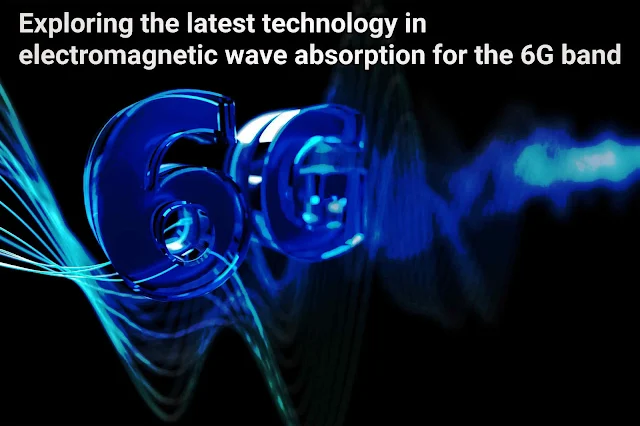Exploring the latest technology in electromagnetic wave absorption for the 6G band
Millimeter wave-absorbing magnetic materials, also known as metamaterials, are a new technology that has the ability to absorb electromagnetic waves in the 6G band. These materials are created by manipulating the structure of materials at the nanoscale, in order to create properties that do not exist in natural materials.
One of the key advantages of millimeter wave-absorbing magnetic materials is their ability to absorb a wide range of frequencies. This makes them particularly useful for absorbing electromagnetic waves in the millimeter wave range, which is the range of frequencies that are expected to be used for 6G communications.
These materials are created by using a combination of metals and dielectrics, and can be designed to absorb specific frequencies of electromagnetic waves. The most common approach for creating millimeter wave-absorbing magnetic materials is to use a combination of metallic and dielectric layers, with each layer having a specific thickness and electrical conductivity.
One of the key challenges in the development of millimeter wave-absorbing magnetic materials is to create materials that can absorb a wide range of frequencies, while also having a high level of absorption efficiency. This requires a deep understanding of the fundamental physics of electromagnetic waves and the properties of materials at the nanoscale.
The research on millimeter wave-absorbing magnetic materials is still in its early stages, but it has the potential to revolutionize the way we communicate and transfer data. These materials could be used to create more efficient and reliable communication systems, and could also be used in a wide range of applications such as medical imaging, radar, and sensing.
About Korea Institute of Materials Science (KIMS)
The Korea Institute of Materials Science (KIMS) is a research institute located in Changwon, South Korea. It was established in 1976 as a national research institute under the Ministry of Trade, Industry, and Energy. The mission of KIMS is to conduct cutting-edge research in materials science and technology, in order to support the development of the national economy and improve the quality of life for the people of South Korea.
KIMS conducts a wide range of research in materials science and technology, including the development of new materials, the characterization and analysis of existing materials, and the study of the properties and behavior of materials at the atomic and molecular scale. The institute has a particular focus on advanced materials, such as nanomaterials, biomaterials, and energy materials.
The research activities at KIMS are divided into several research centers, each of which focuses on a specific area of materials science and technology. The research centers at KIMS include the Center for Advanced Materials, the Center for Biomaterials and Tissue Engineering, the Center for Energy Materials, the Center for Nano and Microscale Science, and the Center for Surface Engineering.
KIMS also provides a range of services to industry, including materials testing and analysis, materials characterization, and materials processing. The institute works closely with industry to transfer its research results into practical applications, and has a number of technology transfer and licensing agreements with companies in South Korea and around the world.
In summary, the Korea Institute of Materials Science (KIMS) is a research institute in South Korea that conducts cutting-edge research in materials science and technology with a particular focus on advanced materials such as nanomaterials, biomaterials, and energy materials. The research at KIMS is divided into several research centers, and it also provides a range of services to industry. KIMS works closely with industry to transfer its research results into practical applications and has a number of technology transfer and licensing agreements with companies worldwide.
In conclusion, millimeter wave-absorbing magnetic materials are a new technology that has the ability to absorb electromagnetic waves in the 6G band. They are created by manipulating the structure of materials at the nanoscale, and have the potential to revolutionize the way we communicate and transfer data. With more research and development, these materials could be used to create more efficient and reliable communication systems, and could also be used in a wide range of other applications.

